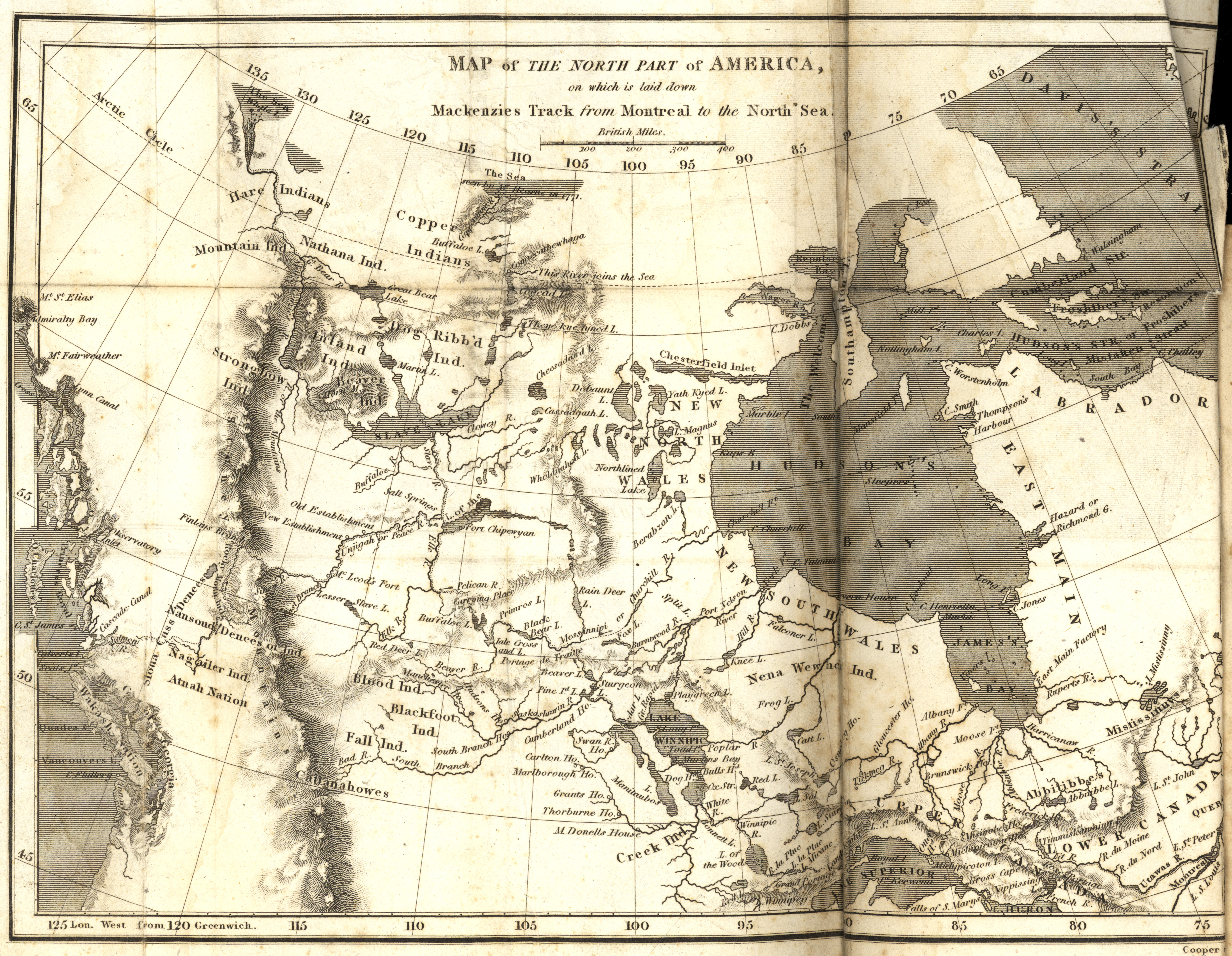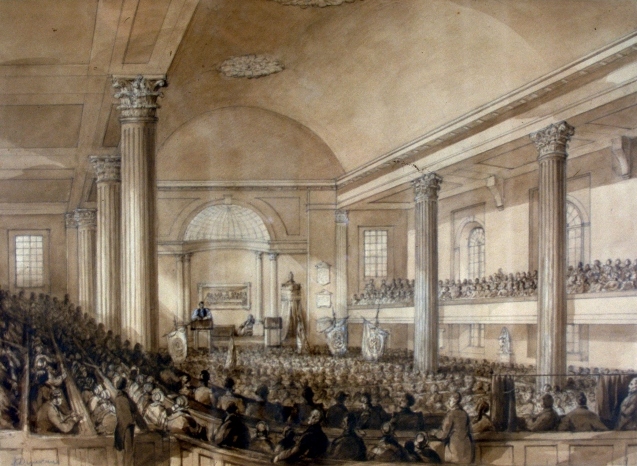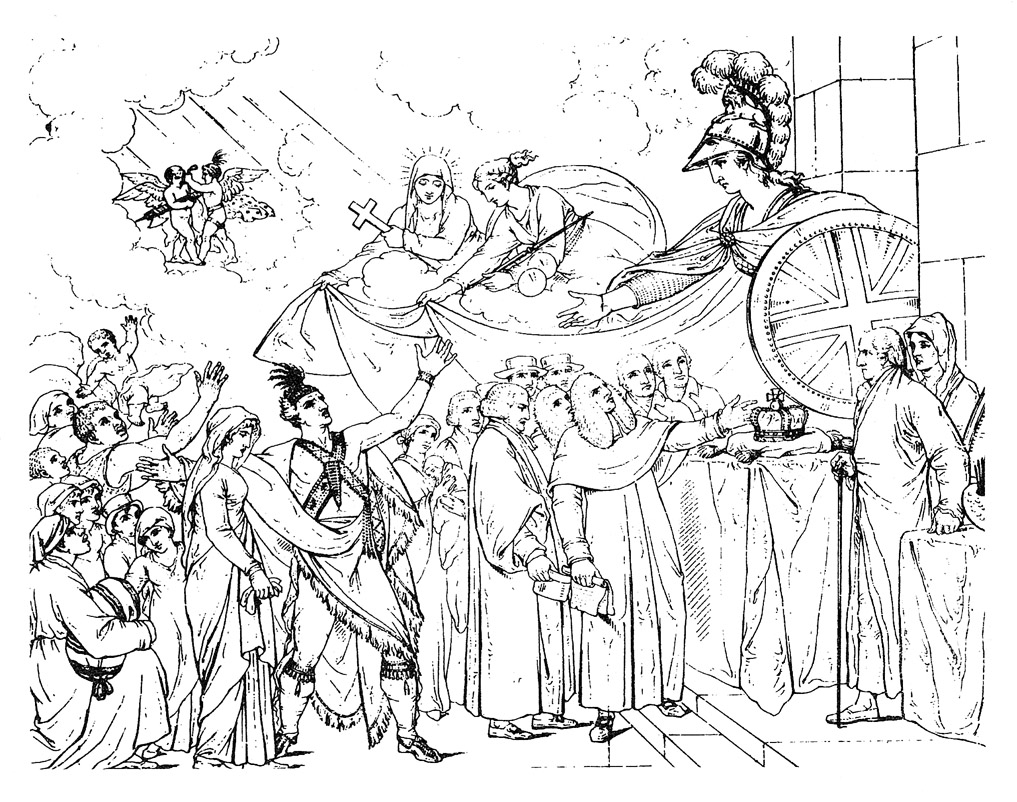|
John Molson
John Molson (December 28, 1763 – January 11, 1836) was an English-born brewer and entrepreneur in colonial Quebec, which during his lifetime became Lower Canada. In addition to founding Molson Brewery, he built the first steamship and the first public railway in Canada, was a president of the Bank of Montreal, and established a hospital, a hotel, and a theatre in Montreal. The dynasty he founded, the Molson family, is still a wealthy and powerful force in Canada. Early life John Molson was born in 1763, in the parish of Moulton near Spalding, Lincolnshire, England. His father John Molson senior (1730–1770) had, in 1760, married Mary Elsdale (1739–1772), the eldest daughter of Samuel Elsdale (1704–1788), of Surfleet. Her brother, Robinson Elsdale (1744–1783), was a privateer, whose unpublished exploits formed the basis of the novel by Frederick Marryat, ''The Privateersman'' (1846). Before the marriage, John Molson senior inherited a property known as Snake Hall ... [...More Info...] [...Related Items...] OR: [Wikipedia] [Google] [Baidu] |
Moulton, Lincolnshire
Moulton is a village in the civil parish of The Moultons, in the South Holland district of Lincolnshire, England. It is situated on the B1537 road, east from the centre of Spalding and west from Holbeach. Moulton is the primary village of an extensive Fenland parish, over in length. The civil parish includes the smaller villages of Moulton Chapel, Moulton Seas End and Moulton Eaugate. The separate village of Moulton Chapel is about south of Moulton and a similar distance east of Cowbit. History Moulton Grammar School was founded through an endowment given in the will of John Harrox (died 1561) who was steward to Sir John Harrington of Weston. The School opened in 1562 with ten pupils and continued to educate boys until 1939 when it merged with Spalding Grammar School. Some school buildings still exist but are now private residences. John Harrox is commemorated in the name of the Primary School and the Moulton Harrox sports club. The Moulton Harrox Educational Foundation u ... [...More Info...] [...Related Items...] OR: [Wikipedia] [Google] [Baidu] |
Robinson Elsdale
Robinson Elsdale (1744–1783), was an English privateer and autobiographer. He was the son of Samuel Elsdale (1704–1788) and Mary Elsdale, of Surfleet, Lincolnshire. He was baptised on 25 December 1744 at Surfleet. His sister Mary (1739–1772) was the mother of John Molson who founded the Molson Brewery. Elsdale entered the Royal Navy as a midshipman, but left early by reason of the slowness of promotion, and served in various privateers cruising against the French, chiefly off the coast of Hispaniola and the west coast of Africa, between 1762 and 1779, when he retired. For the benefit of his wife he wrote an account of some of the most exciting adventures and experiences which he had met with during his sea life. Those episodes in a life of adventure are told in a fresh, simple, and lively style, and abound in hair-breadth escapes and romantic incidents. The manuscript fell into the hands of Captain Marryat, and was freely used by him in the earlier chapters of ''The Priva ... [...More Info...] [...Related Items...] OR: [Wikipedia] [Google] [Baidu] |
Alexander Mackenzie (explorer)
Sir Alexander Mackenzie (or MacKenzie, gd, Alasdair MacCoinnich; – 12 March 1820) was a Scottish explorer known for accomplishing the first crossing of America north of Mexico in 1793. The Mackenzie River is named after him. Early life Mackenzie was born in House in Stornoway in Lewis. He was the third of the four children born to Kenneth 'Corc' Mackenzie (1731–1780) and his wife Isabella MacIver, from another prominent mercantile family in Stornoway. When only 14 years old, Mackenzie's father served as an ensign to protect Stornoway during the Jacobite rising of 1745. He later became a merchant and held the tack of Melbost; his grandfather being a younger brother of Murdoch Mackenzie, 6th Laird of Fairburn. Educated at the same school as Colin Mackenzie, the army officer and first Surveyor General of India, he sailed to New York City with his father to join an uncle, John Mackenzie, in 1774, after his mother died in Scotland. In 1776, during the American War of ... [...More Info...] [...Related Items...] OR: [Wikipedia] [Google] [Baidu] |
Joseph Frobisher
The Hon. Joseph Frobisher (April 15, 1748 – September 12, 1810) M.P., J.P., was one of Montreal's most important fur traders. He was elected to the 1st Parliament of Lower Canada and was a seigneur with estates totalling 57,000 acres. He was a founding member of the North West Company and the Beaver Club, of which he was chairman. From 1792, his country seat, Beaver Hall, became a centre of Montreal society. Early life Joseph Frobisher was born at Halifax, Yorkshire in 1748. He was the third of five sons born to Joseph Frobisher (1710–1763) and Rachel Hargreaves (1718–1790). The Frobishers were an old Yorkshire family descended from Richard Frobysher of Altofts and Thorne, a first cousin of Sir Martin Frobisher. Joseph's eldest two brothers, Benjamin and Thomas (1744-1788), came to Quebec soon after the British Conquest of New France to enter the fur trade, and Joseph joined them in 1769. They put to use the small capital they had between them to set up a fur ... [...More Info...] [...Related Items...] OR: [Wikipedia] [Google] [Baidu] |
James McGill
James McGill (October 6, 1744 – December 19, 1813) was a Scottish Canadian businessman and philanthropist best known for being the founder of McGill University, Montreal. He was elected to the Legislative Assembly of Lower Canada for Montreal West in 1792 and was appointed to the Executive Council of Lower Canada in 1793. He was the honorary Lieutenant-Colonel of the 1st Battalion, Montreal Militia, a predecessor unit of The Canadian Grenadier Guards. He was also a prominent member of the Château Clique and one of the original founding members of the Beaver Club. His summer home stood within the Golden Square Mile. Biography The McGill family originated in Ayrshire and had been living in Glasgow for two generations by the time James was born at the family home on Stockwell Street. The McGills were metalworkers and, from 1715 onward, burgesses of the city and members of the Hammermen's Guild, James' father having served as deacon. James McGill was educated at the Unive ... [...More Info...] [...Related Items...] OR: [Wikipedia] [Google] [Baidu] |
English Porter
Porter is a style of beer that was developed in London, England in the early 18th century. It was well-hopped and dark in appearance owing to the use of brown malt.Dornbusch, Horst, and Garrett Oliver. "Porter." The Oxford Companion to Beer. Ed. Garrett Oliver. 2012. Print. The name is believed to have originated from its popularity with working class people and porters. The popularity of porter was significant. It became the first beer style to be brewed around the world, and production had commenced in Ireland, North America, Sweden, and Russia by the end of the 18th century. The history of stout and porter are intertwined. The name "stout", used for a dark beer, came about because strong porters were marketed as "stout porter", later being shortened to just stout. Guinness Extra Stout was originally called "Extra Superior Porter" and was not given the name "Extra Stout" until 1840. Today, the terms stout and porter are used by different breweries almost interchangeably ... [...More Info...] [...Related Items...] OR: [Wikipedia] [Google] [Baidu] |
Montreal
Montreal ( ; officially Montréal, ) is the second-most populous city in Canada and most populous city in the Canadian province of Quebec. Founded in 1642 as '' Ville-Marie'', or "City of Mary", it is named after Mount Royal, the triple-peaked hill around which the early city of Ville-Marie is built. The city is centred on the Island of Montreal, which obtained its name from the same origin as the city, and a few much smaller peripheral islands, the largest of which is Île Bizard. The city is east of the national capital Ottawa, and southwest of the provincial capital, Quebec City. As of 2021, the city had a population of 1,762,949, and a metropolitan population of 4,291,732, making it the second-largest city, and second-largest metropolitan area in Canada. French is the city's official language. In 2021, it was spoken at home by 59.1% of the population and 69.2% in the Montreal Census Metropolitan Area. Overall, 85.7% of the population of the city of Montreal co ... [...More Info...] [...Related Items...] OR: [Wikipedia] [Google] [Baidu] |
Duke Of Atholl
Duke of Atholl, named for Atholl in Scotland, is a title in the Peerage of Scotland held by the head of Clan Murray. It was created by Queen Anne in 1703 for John Murray, 2nd Marquess of Atholl, with a special remainder to the heir male of his father, the 1st Marquess. , there were twelve subsidiary titles attached to the dukedom: Lord Murray of Tullibardine (1604), Lord Murray, Gask and Balquhidder (1628), Lord Murray, Balvany and Gask (1676), Lord Murray, Balvenie and Gask, in the County of Perth (1703), Viscount of Balquhidder (1676), Viscount of Balquhidder, Glenalmond and Glenlyon, in the County of Perth (1703), Earl of Atholl (1629), Earl of Tullibardine (1628), Earl of Tullibardine (1676), Earl of Strathtay and Strathardle, in the County of Perth (1703), Marquess of Atholl (1676) and Marquess of Tullibardine, in the County of Perth (1703). These titles are also in the Peerage of Scotland. The dukes have also previously held the following titles: Baron Strange ( Peera ... [...More Info...] [...Related Items...] OR: [Wikipedia] [Google] [Baidu] |
Wilmot Vaughan, 1st Earl Of Lisburne
Wilmot Vaughan, 1st Earl of Lisburne (1728 – 6 January 1800), of Trawsgoed, Cardiganshire, known as Viscount Lisburne from 1766 to 1776, was a WelshThe Vaughans of Trawsgoed peer and politician. Lisburne was the son of Wilmot Vaughan, 3rd Viscount Lisburne, and was educated at Eton College. On 30 Jan 1750/1, he was commissioned an ensign in the 2nd Regiment of Foot Guards. He resigned his commission in December 1754. He was elected to the House of Commons for Cardiganshire in 1755, a seat he held until 1761 and again from 1768 to 1791 and also represented Berwick-upon-Tweed between 1765 and 1768. He served as a Lord of Trade in 1768 and as a Lord of the Admiralty from 1770 to 1782. Lisburne succeeded his father as fourth Viscount Lisburne in 1766 but as this was an Irish peerage it did not prohibit him from sitting in the House of Commons. Apart from his political career he was also Lord Lieutenant of Cardiganshire from 1762 to his death. On 5 July 1759, he was ... [...More Info...] [...Related Items...] OR: [Wikipedia] [Google] [Baidu] |
Morpeth, Northumberland
Morpeth is a historic market town in Northumberland, North East England, lying on the River Wansbeck. Nearby towns include Ashington and Bedlington. In the 2011 census, the population of Morpeth was given as 14,017, up from 13,833 in the 2001 census. The earliest evidence of settlement is believed to be from the Neolithic period, and some Roman artifacts have also been found. The first written mention of the town is from 1080, when the de Merlay family was granted the barony of Morpeth. The meaning of the town's name is uncertain, but it may refer to its position on the road to Scotland and a murder which occurred on that road. The de Merlay family built two castles in the town in the late 11th century and the 13th century. The town was granted its coat of arms in 1552. By the mid 1700s it had become one of the main markets in England, having been granted a market charter in 1200, but the opening of the railways in the 1800s led the market to decline. The town's history is cele ... [...More Info...] [...Related Items...] OR: [Wikipedia] [Google] [Baidu] |
Christ Church Cathedral (Montreal)
Christ Church Cathedral is an Anglican Gothic Revival cathedral in Montreal, Quebec, Canada, the seat of the Anglican Diocese of Montreal. It is located at 635 Saint Catherine Street West, between Avenue Union and Boulevard Robert-Bourassa. It is situated on top of the Promenades Cathédrale underground shopping mall, and south of Tour KPMG. It was classified as historical monument by the government of Quebec on May 12, 1988. In 1999, it was designated a National Historic Site of Canada. History An Anglican ministry first began in Montreal in 1760. Services were held in chapels of the Roman Catholic Church for the first half-century. In 1789, the Anglican congregation of Montreal received a former Jesuit church, renaming it as Christ Church. The building was used by the congregation until 1803, when it was destroyed in a fire. The clergyman was appointed by Dorchester as garrison chaplain of Montreal in 1766, with inaugural service in Christ Church was pronounced by him o ... [...More Info...] [...Related Items...] OR: [Wikipedia] [Google] [Baidu] |
Loyalist (American Revolution)
Loyalists were colonists in the Thirteen Colonies who remained loyal to the British Crown during the American Revolutionary War, often referred to as Tories, Royalists or King's Men at the time. They were opposed by the Patriots, who supported the revolution, and called them "persons inimical to the liberties of America." Prominent Loyalists repeatedly assured the British government that many thousands of them would spring to arms and fight for the crown. The British government acted in expectation of that, especially in the southern campaigns in 1780–81. Britain was able to effectively protect the people only in areas where they had military control, and in return, the number of military Loyalists was significantly lower than what had been expected. Due to the conflicting political views, loyalists were often under suspicion of those in the British military, who did not know whom they could fully trust in such a conflicted situation; they were often looked down upon. Pat ... [...More Info...] [...Related Items...] OR: [Wikipedia] [Google] [Baidu] |




.jpg)




